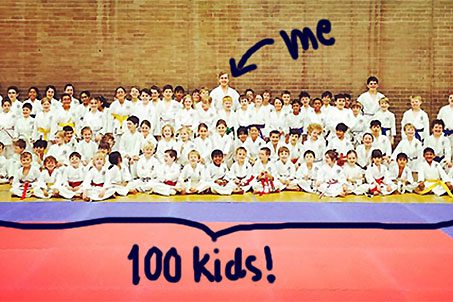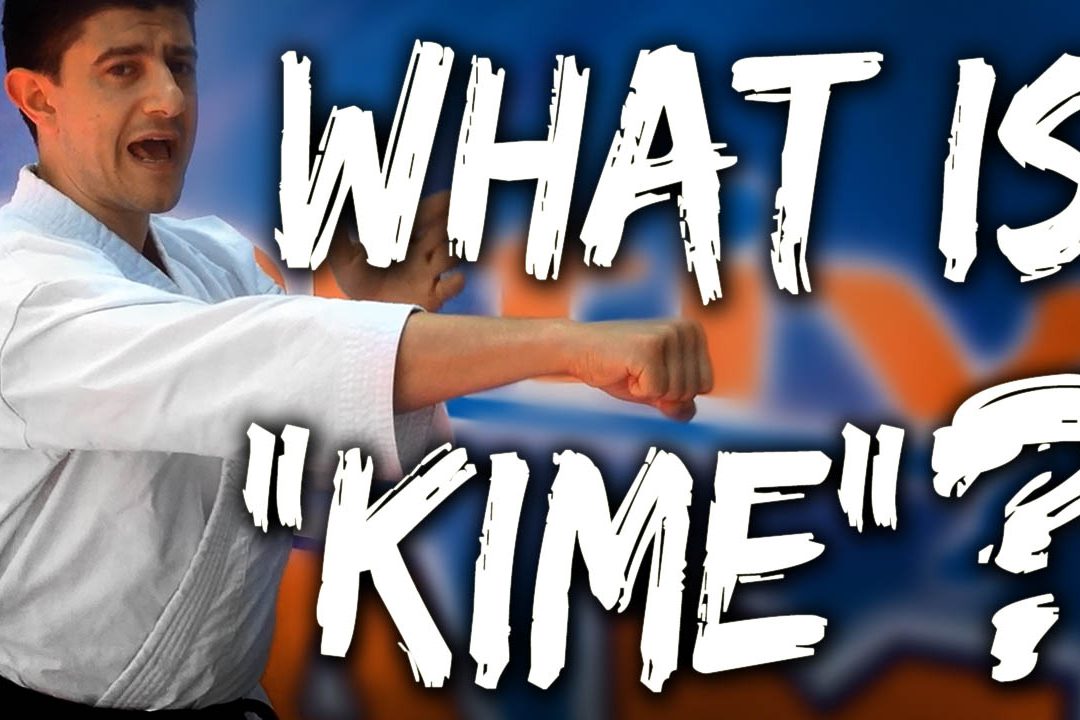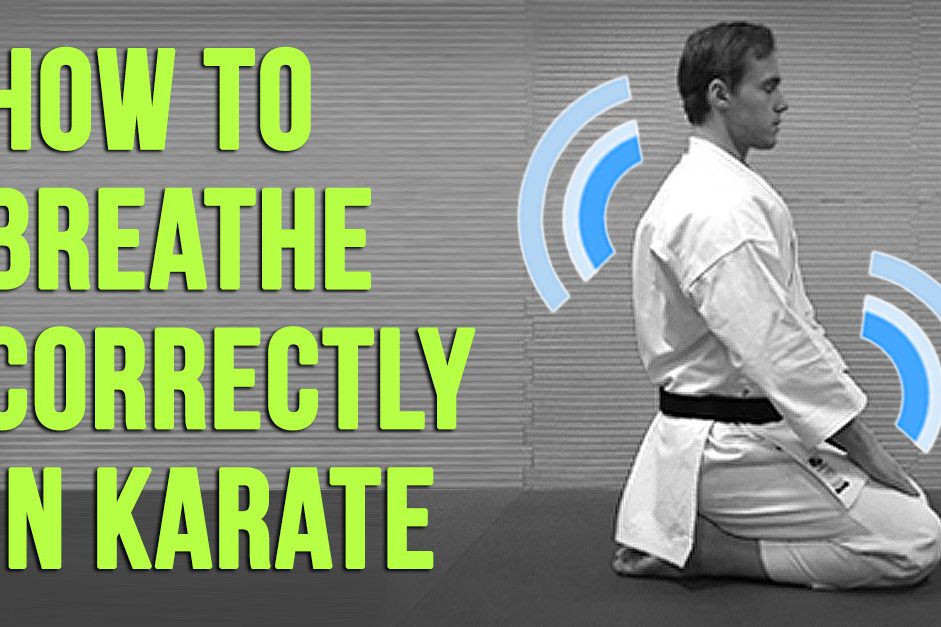Okay, I’m a little disappointed in you guys.
Hear me out:
Since I recently received my long-awaited 10th dan hanshi title in Karate, I haven’t received a single congratulatory e-mail or phone call, from anyone! Not even a friendly pat on the back! Not even a manly punch on the shoulder! I mean, wazzup guys?!
You’re not proud of me?
Seriously!?
Oh, I’m sorry, what’s that? Aah, you don’t believe me? You want proof? Some kind of certificate, perhaps? No problem, sure, here’s a freshly taken pic of my diploma hanging on the wall:

See?
It even has a big, fat, red, official stamp on it. Tenth dan and ‘hanshi’ title in Karate handed over to Jesse from the All Okinawan Very Traditional Karatedo Federation. Signed and stamped by Santa Claus himself. It’s friggidy f-f-fresh to say the least!
So… time for that congratulatory e-mail now, huh? HUH!? [you should see the superior smirk on my face when I write this].
NAAH, I’M JUST MESSING WITH YOU!
The diploma is not mine!
In fact, it’s not even a Karate diploma.
It’s from a baking contest.
I took the picture at the local bakery, where it stands proudly. You can see the baker to the left. His name, according to the diploma, is Shinzato and he seems to have won first place at a technical confectionery baking contest in Fukuoka in 2010.
Way to go!
That’s what his diploma says, at least.
But you’ve got to admit that it did look a lot like a Karate diploma, right? That is, unless you actually read Japanese (for your information, the diploma mentions some kind of “butter cream” creation that Shinzato apparently amazed the judges with! Sweet…).
Anyway, what I’m trying to say with this highly deceiving intro is that when we, as non-Japanese/Okinawan/Chinese, see these half-mystic Asian scriptures and other Eastern cultural phenomenons through our “foreign filter”, it doesn’t really take much for somebody in the right position (on both sides of the filter?) to convince us that something is not what it actually is.
It’s not a 10th dan hanshi diploma.
It’s a 1st place technical baking contest diploma.
But, I said otherwise.
And even though I was making an intentional joke (haha… ha.) for the purpose of fooling you a little – and get my point across in the process – there are plenty of people who intentionally (though sometimes unintentionally) distort our view(s) on stuff, like Karate, for other purposes than being funny (money, power, respect anyone?).
Enter “Ti”.
Ti, Di or Te, is an old Okinawan indigenous martial art which existed in Okinawa long before all of these other influences came around, eventually forming what we today refer to as Karate. I guess you’ve heard about it. The name Ti simply means hand. It’s the Okinawan version of the Japanese word “te”, and sometimes it’s also called “Udundi” (“Palace hand”).
Today it is “still” practised, even though it is…
[Okay, time out! TIME OUT! I just HAVE to tell you guys that writing all of the above has taken me *roughly* three hours! It’s impossible to write a serious article when six half-drunk Okinawans are having a flippin’ impromptu beer-party right next to me! Do you guys realize what HARD conditions I’m working under here to get through to you?! GAAH! I even took a picture!]
So, anyway, I was trying to sa-
[What the hell, one guy just started SINGING!!!]
-y that this old, pre-Karate style of martial arts known as Ti is still practised in Okinawa today.
Or… is it?
Perhaps it’s not.
Well, some people certainly want us to believe it is. For those of you not in Okinawa, or who just don’t know what I’m talking about, this contemporary form of Ti can best be viewed with the help of sensei Youtube.
Here’s a vid:
However, I beg to disagree
This is not Ti.
Real old-school “Ti” exists not as an isolated system of joint-locks, takedowns, strange kata dances and weapon stuff (as people wants you to believe), but forms an integral part of application-style, grimy, dirty, old traditional Okinawan Karate.
As a matter of fact, real Ti ONLY exists in old-style Okinawan Karate.
The mere fact that these modern Ti proponents use weapons such as nunchaku and sai (which are not indigenous to Okinawa – and don’t come up to me with that “nunchaku is a horse bridle” explanation, because there were hardly any horses in Okinawa during that time, neither are there now), along with several empty handed kata (this formalized physical kata thinking-mode came from China way later) just goes to show that some people really wants your attention.
Controversial?
I eat controversial for breakfast, baby.
From my humble point of view, the story you are told is one of aikido, mixed with Okinawan dance and Nihon Bujutsu body mechanics, wrapped up with some Okinawan Kobudo, with a pinch of mysticism sprinkled on top. Neatly labeled “Ti”, for obvious reasons.
Actually (I don’t know if I should write this), when one of the highest authorities on “Ti” here in Okinawa (whose secret house I visited) was asked from whom he had learnt these old, secret Ti skills, he replied; “From a man who lives up in the mountains. You will have to drive for 2-3 hours without seeing anything but jungle to find this master”.
The fun thing is, it’s impossible to drive 2-3 hours in Okinawa without seeing a house.
Allow me to “lol”.
But, that’s not what this article is about.
What this is about, is that things aren’t always what they seem, and that real Ti only exists in old-style Karate (after all, it forms the base). You can explore this for yourself easily: Learn as many Karate-related words of the old Okinawan language (uchinaaguchi) as possible. “Muchimi”, remember? “Chinkuchi”, right? There’s other too, like “gammaku” and “kukiji”.
They are the only remainders of Ti we have left, and we need to explore them thoroughly to understand true Karate.
What these words of the old language all have in common is that they describe a WAY of USING the BODY when executing all kinds of techniques. Body mechanics and their martial applications, in other words.
That is Ti.
Ti is not a martial arts style, but the beginning and the end of all Karate.
– Onaga Yoshimitsu, kaicho, Shinjinbukan
And if not, then I’ll just keep that 10th dan if it’s okay with you.




18 Comments